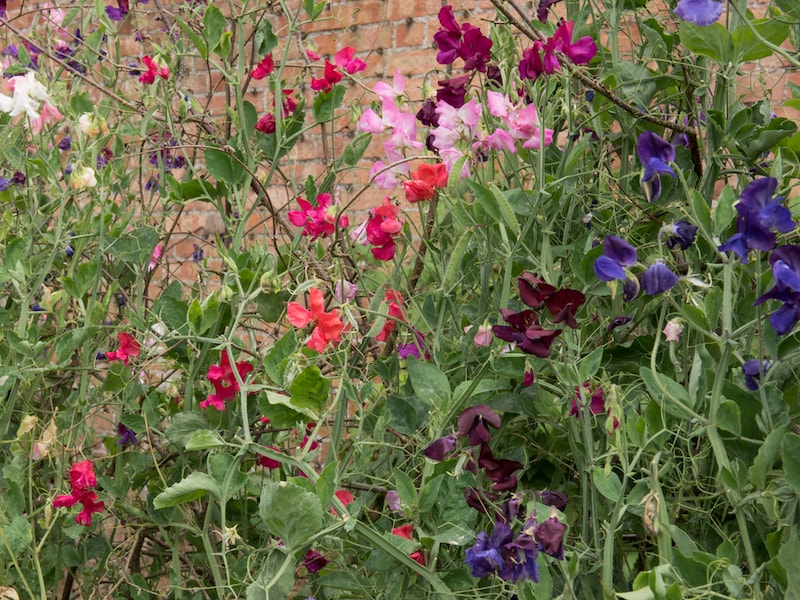Sweet peas bring height, scent and colour to the garden. Perfect for allotments and wildlife gardens, they’re a favourite with pollinators too. Sweet pea seeds are easy to sow and provide a cost effective way to fill your garden. Ideal for kitchen windowsill posies, they make lovely cut flowers too. Here’s everything you need to know about growing sweet peas.
What are the groups of sweet peas?
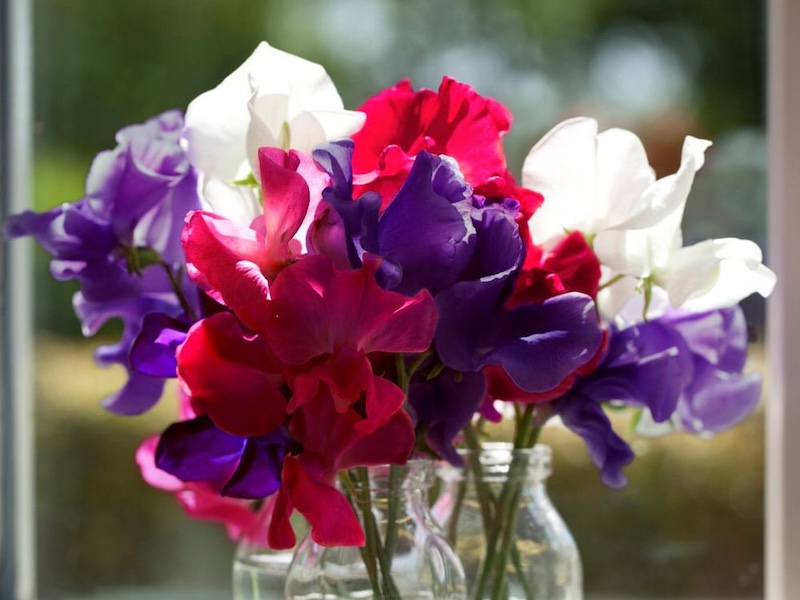
Sweet peas vary in form, colour and scent
Image: Sweet pea ‘Royal Standard’ from Suttons
Over the centuries, sweet peas have been vastly improved by breakthroughs in breeding. Enthusiasts have focused on manipulating plant height, flower size, scent and colour. As a result, five main groups of sweet peas are available today:
- Species/wild types – a great example of this group is sweet pea ‘Cupani’, brought to the UK in the late 1600s by monk Cupani. They have delicate flowers with simple colours and a strong scent.
- Grandiflora – these heirloom varieties were developed in the 19th century to keep the scent of wild types but with an increased flower size. A good example of this type is ‘Fragrant Boundary’.
- Modern grandifloras – this group has large flowers, long stems and a powerful scent.
- Spencer types – frilly and brightly coloured, these showy sweet peas are available in lots of bright colours. Popular for showing at exhibitions.
- Dwarf types – these are bred specially for a compact form. Best for container planting, they have showy flowers with generally good scent.
Within each of these five groups there are myriad variations of colour and scent strength. Some feature picotee colouration, bi-colour flowers and marbling effects. The great diversity of these annual flowers is just one reason sweet peas are so loved by gardeners.
Three of the best sweet peas to try
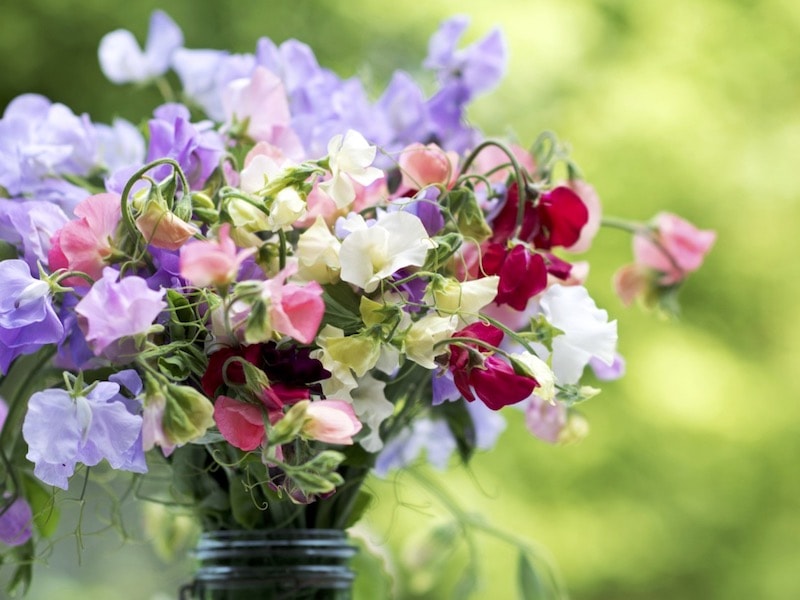
Image: Sweet pea ‘Sublime Scent Mix’ from Suttons
With so many lovely sweet peas available, it can be hard to know which to choose. If you’ve never grown them before, try a pre-mixed collection like sweet pea ‘Scent Infusion’. The fun blend of colours and scents will help you find out what you like. Alternatively, why not try some of our favourites below:
1. Sweet pea ‘Distant Horizons’
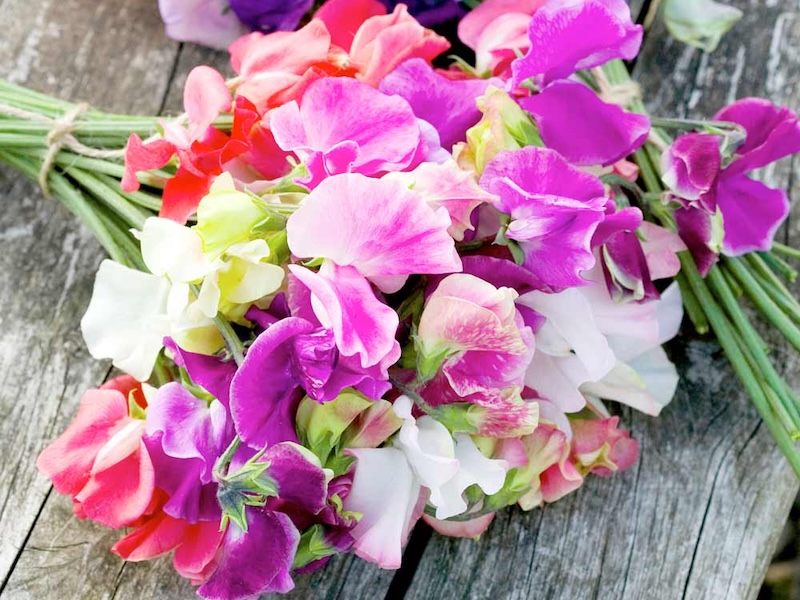
Sweet peas have enormous variety in colour
Image: Sweet Pea ‘Distant Horizons’ from Suttons
A standout for the vase, Sweet Pea ‘Distant Horizons’ features a beautiful array of mixed pastel colours. This variety is renowned for its exceptional long flowering season, giving you a steady supply of cut flowers to enjoy all through the summer.
2. Sweet pea ‘Supersonic’

Image: Sweet pea ‘Supersonic’ from Suttons
For a scent strong enough to fill your entire garden, go for sweet pea ‘Supersonic’. The blooms of this variety have a beautiful perfume and make a fantastic choice for anyone wanting to use them as cut flowers. The stems are long and strong and the large flowers come in an eye-catching mix of colours. Reaching 1.5m in height, this variety should be trained up a wigwam or trellis for support.
3. Sweet pea ‘Fragrant Tumbler’
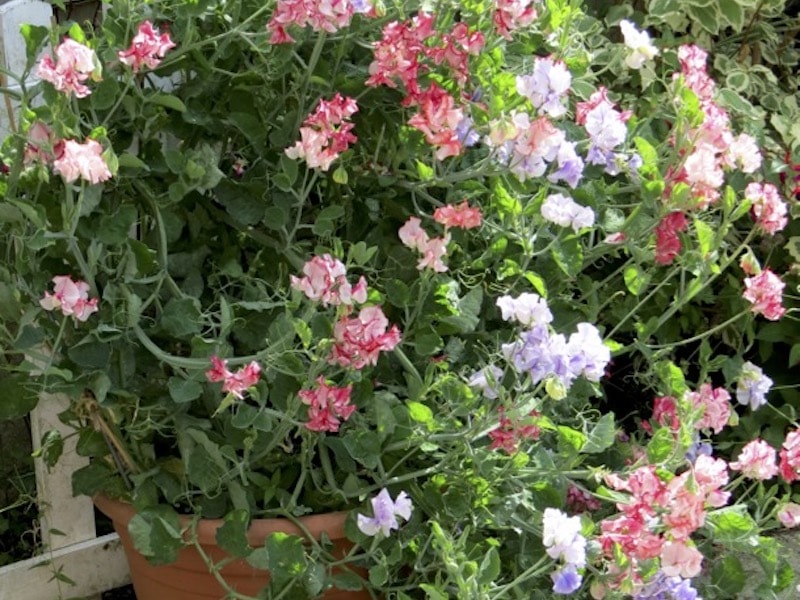
Image: Sweet pea ‘Fragrant Tumbler’ from Suttons
Plant sweet pea ‘Fragrant Tumbler’ anywhere you want a sprawling mass of colour. This dwarf variety doesn’t require support; it reaches a maximum height of 1m and will happily tumble out of containers and across beds. Try it on a wall to enjoy the full cascading effect. The prolific flowers are large, with picotee detail on the petals and a gorgeous scent.
How to sow sweet pea seeds
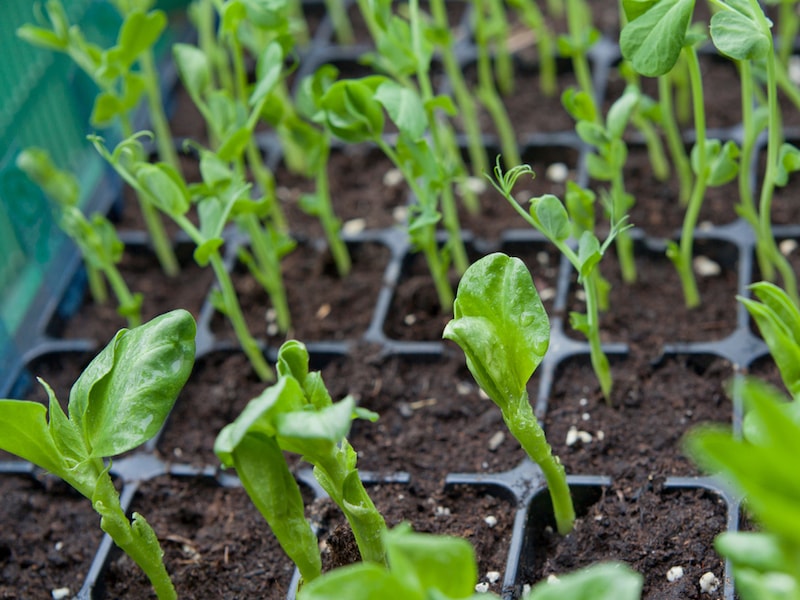
Image: JoannaTkaczuk/Shutterstock
Sowing your own seeds is a great way to get your plants started. Put a couple of seeds into each module of a seed tray, making sure to use high quality seed compost. Sow your seeds in early spring, from January through to May, and keep your germinating seeds moist. These will give you blooms throughout late spring and summer.
To enjoy sweet pea flowers even earlier in the year, sow the seeds in October and November and overwinter the seedlings in a cold frame.
If you’ve missed the seed-sowing window or don’t have lots of space, simply order sweet pea plants to plant out in spring.
How to care for sweet peas

Image: Sweet pea ‘Sweet Dreams Mixed’ from Suttons
Provide a plant support for taller varieties of sweet peas as they grow. Make a simple teepee out of bamboo canes or grow them up an ornamental trellis in beds and borders. Position the supports prior to planting, and keep your young sweet pea plants close to the poles to help them climb. Deadhead often once your plants start flowering to keep them blooming.
To find out more about growing these popular blooms, read our article Best expert advice on growing sweet peas. If you’ve got a favourite variety, drop us an email or send us a message on our social channels – we’d love to hear from you.
Last Updated on December 9, 2025 by Suttons Horticultural Team

